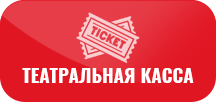| Destination | Tour | Dates | Duration | Price | Comments |
|---|---|---|---|---|---|
| United States | River Cruise from Astrakhan to Moscow on m/s \'Russ\' | 22 Sept 2014 | 14 days / 13 nights | $0 | View Gallery
Prices start from $ 95.00 per person on Main deck (based on double occupancy). Possible upgrades: Upper deck - $ 105.00 Boat deck - $ 110.00 Single suppliment (in single cabin) - $ 50.00 Single suppliment (in twin cabin) - $ 56.00 Price includes: * Arrival and departure transfers for groups of 20 and more * Services of tour guides for groups of 20 and more * Welcome "Bread and Salt" ceremony * Welcome cocktail and Captain's dinner with special entertainment program * Sightseeing program in each point of the itinerary |
Joining the fleet in 2006. The ship is specially designed for the inland waterways cruising, and features outside cabins that allow picturesque views of the passing countryside. All units are comfortably furnished, air-conditioned and have private showers.
Highly professional and experienced crew takes great pride in their ship and maintains it in excellent condition. The dining service offers Continental, Russian and Ukrainian cuisine, as well as gourmet specialties of the visited regions. Most meals are served on board in a warm homelike atmosphere of the ship's dining room. Service personnel are well trained and eager to offer assistance. Public areas may include bars, small souvenir shops, music salon and/or beauty parlor. Laundry service is also available.
Our government-licensed English speaking tour guide will accompany you during on shore excursions and will fill you in on the history, mythology, and art of the places you visit. In addition to extensive sight-seeing outings, our on board entertainment program includes daily musical performances, lectures by professional guest speakers, folk shows, Russian and Ukrainian language lessons, passengers talent shows, outdoor shashlyk (shish-kabob) picnic at recreation stops, Grand Tea Ceremony, Blini and Vodka tasting.















